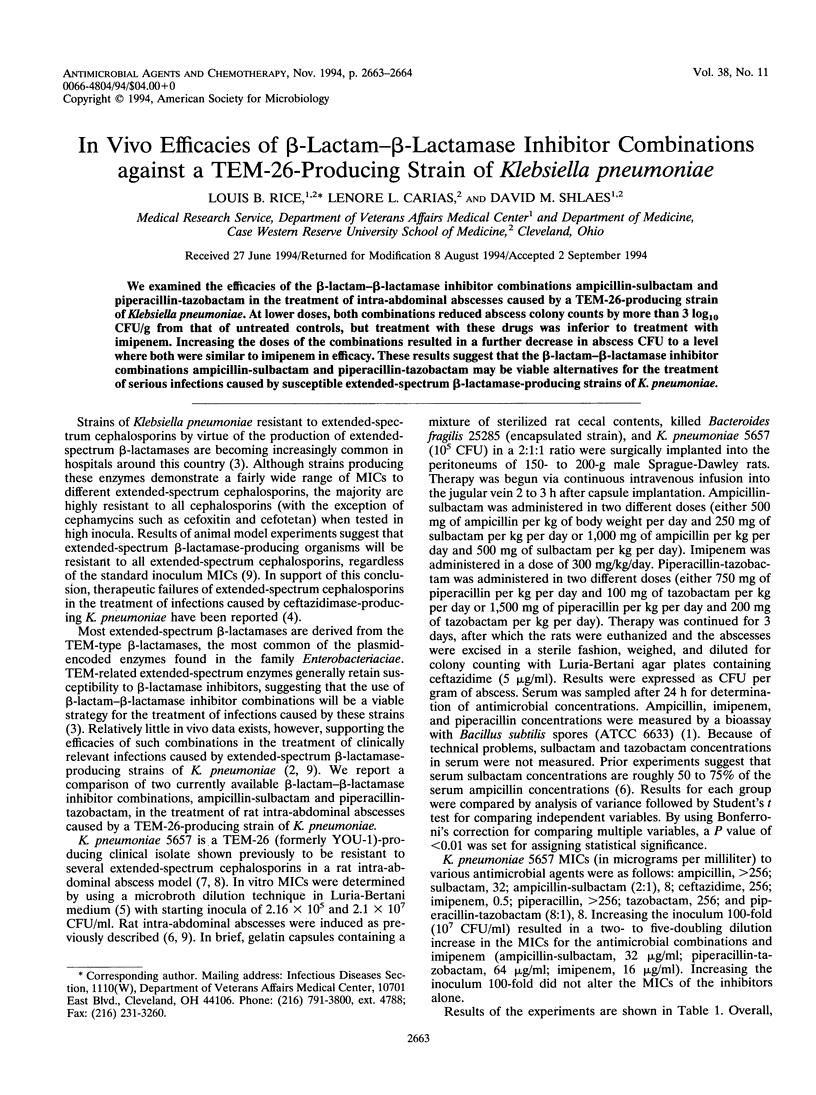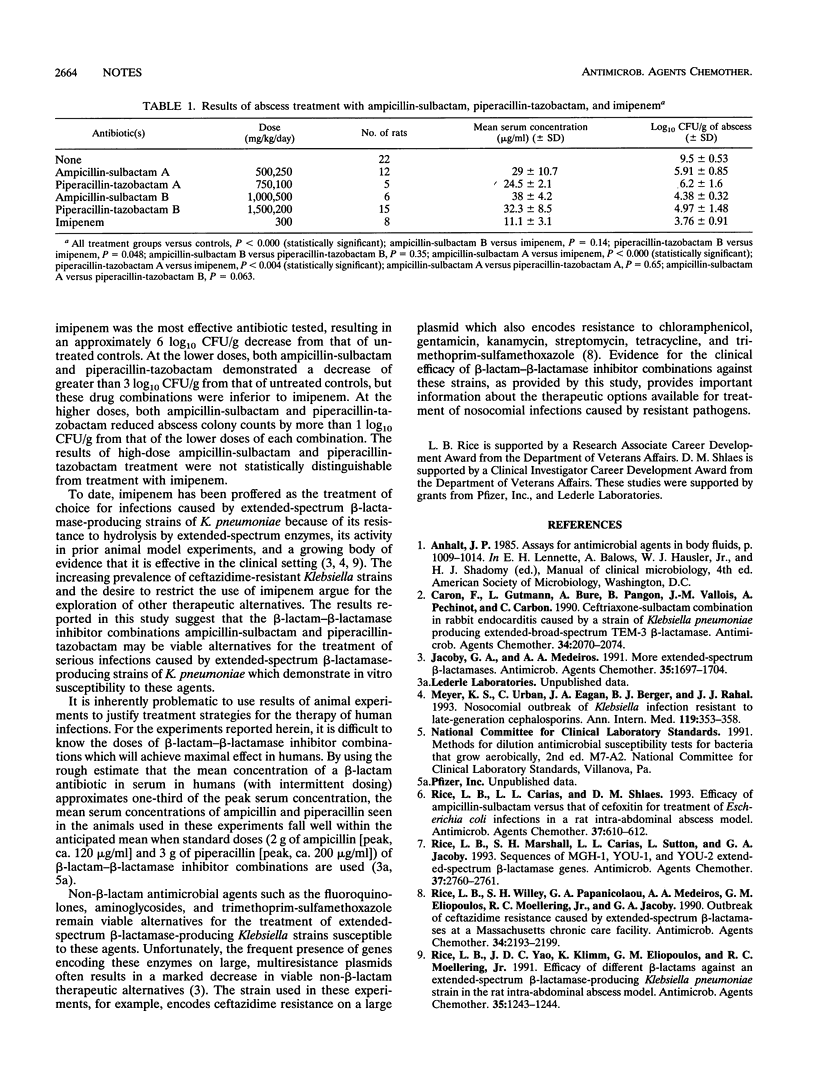Abstract
We examined the efficacies of the beta-lactam-beta-lactamase inhibitor combinations ampicillin-sulbactam and piperacillin-tazobactam in the treatment of intra-abdominal abscesses caused by a TEM-26-producing strain of Klebsiella pneumoniae. At lower doses, both combinations reduced abscess colony counts by more than 3 log10 CFU/g from that of untreated controls, but treatment with these drugs was inferior to treatment with imipenem. Increasing the doses of the combinations resulted in a further decrease in abscess CFU to a level where both were similar to imipenem in efficacy. These results suggest that the beta-lactam-beta-lactamase inhibitor combinations ampicillin-sulbactam and piperacillin-tazobactam may be viable alternatives for the treatment of serious infections caused by susceptible extended-spectrum beta-lactamase-producing strains of K. pneumoniae.
Full text
PDF

Selected References
These references are in PubMed. This may not be the complete list of references from this article.
- Caron F., Gutmann L., Bure A., Pangon B., Vallois J. M., Pechinot A., Carbon C. Ceftriaxone-sulbactam combination in rabbit endocarditis caused by a strain of Klebsiella pneumoniae producing extended-broad-spectrum TEM-3 beta-lactamase. Antimicrob Agents Chemother. 1990 Nov;34(11):2070–2074. doi: 10.1128/aac.34.11.2070. [DOI] [PMC free article] [PubMed] [Google Scholar]
- Jacoby G. A., Medeiros A. A. More extended-spectrum beta-lactamases. Antimicrob Agents Chemother. 1991 Sep;35(9):1697–1704. doi: 10.1128/aac.35.9.1697. [DOI] [PMC free article] [PubMed] [Google Scholar]
- Meyer K. S., Urban C., Eagan J. A., Berger B. J., Rahal J. J. Nosocomial outbreak of Klebsiella infection resistant to late-generation cephalosporins. Ann Intern Med. 1993 Sep 1;119(5):353–358. doi: 10.7326/0003-4819-119-5-199309010-00001. [DOI] [PubMed] [Google Scholar]
- Rice L. B., Carias L. L., Shlaes D. M. Efficacy of ampicillin-sulbactam versus that of cefoxitin for treatment of Escherichia coli infections in a rat intra-abdominal abscess model. Antimicrob Agents Chemother. 1993 Mar;37(3):610–612. doi: 10.1128/aac.37.3.610. [DOI] [PMC free article] [PubMed] [Google Scholar]
- Rice L. B., Marshall S. H., Carias L. L., Sutton L., Jacoby G. A. Sequences of MGH-1, YOU-1, and YOU-2 extended-spectrum beta-lactamase genes. Antimicrob Agents Chemother. 1993 Dec;37(12):2760–2761. doi: 10.1128/aac.37.12.2760. [DOI] [PMC free article] [PubMed] [Google Scholar]
- Rice L. B., Willey S. H., Papanicolaou G. A., Medeiros A. A., Eliopoulos G. M., Moellering R. C., Jr, Jacoby G. A. Outbreak of ceftazidime resistance caused by extended-spectrum beta-lactamases at a Massachusetts chronic-care facility. Antimicrob Agents Chemother. 1990 Nov;34(11):2193–2199. doi: 10.1128/aac.34.11.2193. [DOI] [PMC free article] [PubMed] [Google Scholar]
- Rice L. B., Yao J. D., Klimm K., Eliopoulos G. M., Moellering R. C., Jr Efficacy of different beta-lactams against an extended-spectrum beta-lactamase-producing Klebsiella pneumoniae strain in the rat intra-abdominal abscess model. Antimicrob Agents Chemother. 1991 Jun;35(6):1243–1244. doi: 10.1128/aac.35.6.1243. [DOI] [PMC free article] [PubMed] [Google Scholar]


